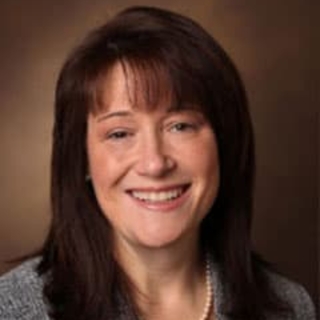
CHOP Welcomes 2 New Division Chiefs
The divisions of Infectious Diseases and Pulmonary Medicine welcomed new chiefs this summer.
Audrey R. Odom John, MD, PhD, new Chief of Infectious Diseases, comes to CHOP from Washington University School of Medicine and the St. Louis Children’s Hospital. Her research focuses on the malaria parasite and the development of new malaria therapies and diagnostics. She succeeds Theoklis Zaoutis, MD, MSCE, who remains at CHOP as an attending physician and active investigator.

who came to CHOP from the Monroe Carell Jr. Children’s Hospital at Vanderbilt, now leads Pulmonary Medicine. She is an international expert in rare and genetic lung diseases in children, including interstitial lung disease, and is currently principal investigator on multiple National Institutes of Health grants. Young succeeds Julian Allen, MD, who served as Chief for more than 20 years.
Study: 1 in 6 Children with Concussion Experiences a Second Concussion Within 2 Years
A new study from CHOP’s Center for Injury Research and Prevention (CIRP) and the Centers for Disease Control and Prevention (CDC) finds that 1 in 6 children aged 5 to 15 who has a concussion will go on to experience a repeat concussion within 2 years. The findings were published in The Journal of Pediatrics.
Studying electronic health records of 536 children with concussion and following them for 2 years, researchers found 8% of patients were diagnosed with a second concussion within the first year, and 16% had a second concussion within 2 years, including 3% who were diagnosed with 2 additional concussions.
“We found that having a lot of symptoms (>10) or a long recovery time (>28 days) from your initial concussion are associated with a subsequent concussion within a couple of years,” says study author Christina Master, MD, CAQSM, co-lead for CIRP’s concussion research program and a sports medicine pediatrician. “By looking at the number of symptoms and length of recovery, clinicians can give families data on which to make informed decisions about future risk.”
Skin Patch Shows Promise for Children with Milk-induced EoE
A new CHOP pilot study finds that a skin patch may be useful in treating children with a painful, chronic condition called eosinophilic esophagitis (EoE) triggered by milk. Among 20 children with EoE who wore Viaskin Milk—a skin patch measuring just over an inch long containing trace amounts of milk protein—9 (47%) saw an improvement in their symptoms and normalization of their biopsies after 11 months. This is the first study to examine how this treatment, called epicutaneous immunotherapy, may help children with milk-induced EoE. The findings were published in Clinical Gastroenterology and Hepatology.
Patients in the study followed a milk-free diet for 9 months, then re-introduced milk into their diet for the next 2 months. After 11 months, almost half of those wearing the Viaskin Milk patch had fewer EoE symptoms, including less inflammation when they underwent an endoscopy, compared to none in the placebo group.
“This study shows great promise for an immunotherapy that aims to desensitize children to milk,” says study leader Jonathan Spergel, MD, PhD, Chief, Section of Allergy. “Our next step would be to launch a much larger study to confirm our results. Currently, there’s no cure for EoE, so this would be the first strategy to treat the underlying cause of the disease.”
Ultrasound Guidance Improves First-attempt Success in IV Access in Children
When caregivers used ultrasound to guide placement of intravenous lines in children with presumed difficult access, they had higher success rates on their first attempt—reducing the number of needle sticks in their young patients. The research, conducted at CHOP, was published in Annals of Emergency Medicine.
“The need to place an intravenous line is a common but challenging requirement for pediatric healthcare providers,” says Alexandra M. Vinograd, MD, an emergency medicine physician at CHOP and the lead investigator of the study. “Our research shows that both the children and their parents are happier with ultrasound-guided line insertion.”
Researchers prospectively enrolled 167 patients identified as having difficult IV access who were randomized to receive either traditional IV line or ultrasound-guided IV lines. First-attempt success was higher in the ultrasound-guided IV line placement group (85.4%) compared to the traditional intravenous line group (45.8%).
Featured in this article
Specialties & Programs
CHOP Welcomes 2 New Division Chiefs
The divisions of Infectious Diseases and Pulmonary Medicine welcomed new chiefs this summer.
Audrey R. Odom John, MD, PhD, new Chief of Infectious Diseases, comes to CHOP from Washington University School of Medicine and the St. Louis Children’s Hospital. Her research focuses on the malaria parasite and the development of new malaria therapies and diagnostics. She succeeds Theoklis Zaoutis, MD, MSCE, who remains at CHOP as an attending physician and active investigator.

who came to CHOP from the Monroe Carell Jr. Children’s Hospital at Vanderbilt, now leads Pulmonary Medicine. She is an international expert in rare and genetic lung diseases in children, including interstitial lung disease, and is currently principal investigator on multiple National Institutes of Health grants. Young succeeds Julian Allen, MD, who served as Chief for more than 20 years.
Study: 1 in 6 Children with Concussion Experiences a Second Concussion Within 2 Years
A new study from CHOP’s Center for Injury Research and Prevention (CIRP) and the Centers for Disease Control and Prevention (CDC) finds that 1 in 6 children aged 5 to 15 who has a concussion will go on to experience a repeat concussion within 2 years. The findings were published in The Journal of Pediatrics.
Studying electronic health records of 536 children with concussion and following them for 2 years, researchers found 8% of patients were diagnosed with a second concussion within the first year, and 16% had a second concussion within 2 years, including 3% who were diagnosed with 2 additional concussions.
“We found that having a lot of symptoms (>10) or a long recovery time (>28 days) from your initial concussion are associated with a subsequent concussion within a couple of years,” says study author Christina Master, MD, CAQSM, co-lead for CIRP’s concussion research program and a sports medicine pediatrician. “By looking at the number of symptoms and length of recovery, clinicians can give families data on which to make informed decisions about future risk.”
Skin Patch Shows Promise for Children with Milk-induced EoE
A new CHOP pilot study finds that a skin patch may be useful in treating children with a painful, chronic condition called eosinophilic esophagitis (EoE) triggered by milk. Among 20 children with EoE who wore Viaskin Milk—a skin patch measuring just over an inch long containing trace amounts of milk protein—9 (47%) saw an improvement in their symptoms and normalization of their biopsies after 11 months. This is the first study to examine how this treatment, called epicutaneous immunotherapy, may help children with milk-induced EoE. The findings were published in Clinical Gastroenterology and Hepatology.
Patients in the study followed a milk-free diet for 9 months, then re-introduced milk into their diet for the next 2 months. After 11 months, almost half of those wearing the Viaskin Milk patch had fewer EoE symptoms, including less inflammation when they underwent an endoscopy, compared to none in the placebo group.
“This study shows great promise for an immunotherapy that aims to desensitize children to milk,” says study leader Jonathan Spergel, MD, PhD, Chief, Section of Allergy. “Our next step would be to launch a much larger study to confirm our results. Currently, there’s no cure for EoE, so this would be the first strategy to treat the underlying cause of the disease.”
Ultrasound Guidance Improves First-attempt Success in IV Access in Children
When caregivers used ultrasound to guide placement of intravenous lines in children with presumed difficult access, they had higher success rates on their first attempt—reducing the number of needle sticks in their young patients. The research, conducted at CHOP, was published in Annals of Emergency Medicine.
“The need to place an intravenous line is a common but challenging requirement for pediatric healthcare providers,” says Alexandra M. Vinograd, MD, an emergency medicine physician at CHOP and the lead investigator of the study. “Our research shows that both the children and their parents are happier with ultrasound-guided line insertion.”
Researchers prospectively enrolled 167 patients identified as having difficult IV access who were randomized to receive either traditional IV line or ultrasound-guided IV lines. First-attempt success was higher in the ultrasound-guided IV line placement group (85.4%) compared to the traditional intravenous line group (45.8%).
Contact us
Division of Infectious Diseases